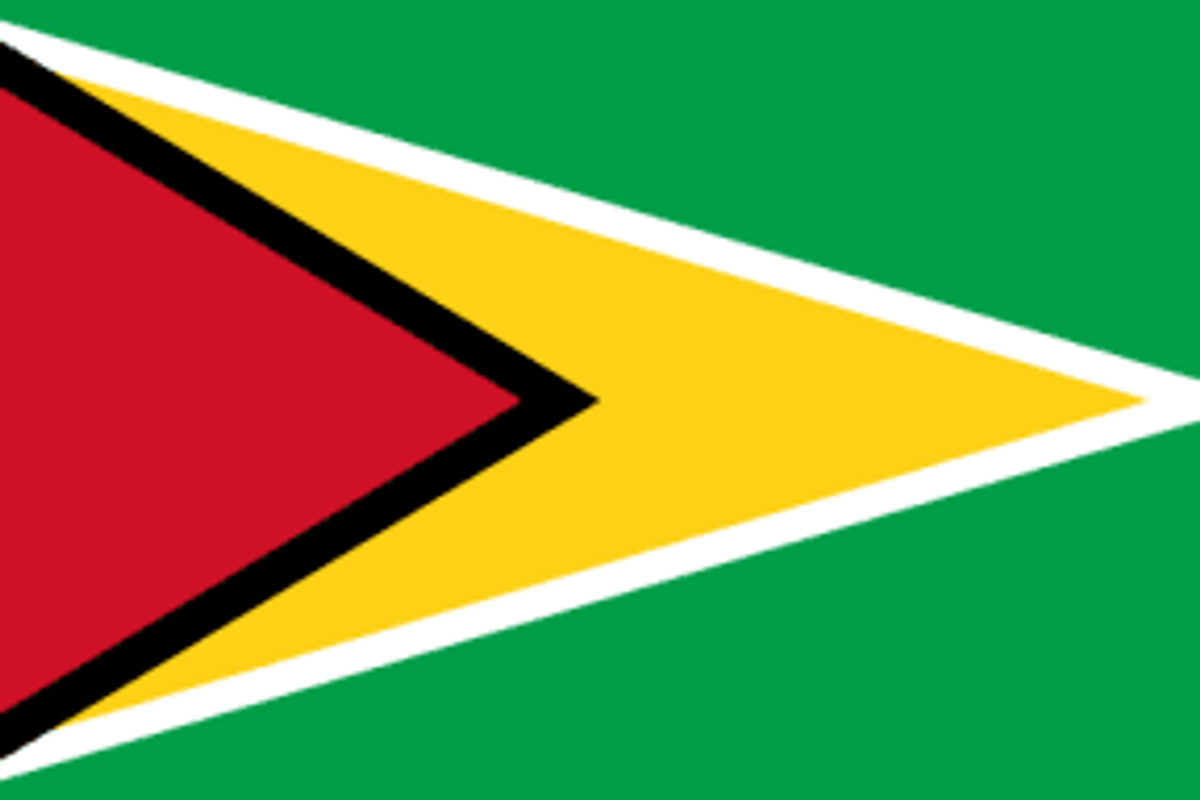Guyana Oil Reserves and How Exxon Reignited the Venezuela Feud

ExxonMobil’s recent oil discovery off the coast of Guyana has reignited the country’s 200-year border conflict with Venezuela.
When thinking about countries with large oil reserves, what comes to mind for most people is places like Saudi Arabia, the US, Canada, Russia and Iran. All put out impressive amounts of oil annually, and often make the list of the world’s top oil-producing countries.
However, the largest-known oil reserves actually belong to Venezuela, which holds 298 billion barrels of oil. And lately, neighboring Guyana has stolen the spotlight. The South American country gained exposure in May when ExxonMobil (NYSE:XOM) announced the discovery of more than 90 meters of high-quality, oil-bearing sandstone reservoirs about 120 miles off its coastline.
The Liza-1 well was drilled to 5,433 meters in 1,742 meters of water, and is the first well on the Stabroek block, which is 26,800 square kilometers in size. The well, which according to Bloomberg may start producing by the end of the decade, could potentially hold 700 million barrels of oil equivalent — that would make it worth $40 billion at today’s international crude price.
The discovery could be significant for Guyana, which currently doesn’t produce any oil and could use the economic boost. It would also give Exxon a much-needed revival after years of declining production and slowing reserves growth — the company’s Q2 earnings reflect that trend, and came to just $4.2 billion compared with $8.8 billion in Q2 2014.
However, both Guyana and Exxon have some obstacles to get past before they can reap those benefits.
Guyana oil reserves and the Venezuela border dispute
In the 19th century, Venezuela claimed about 40 percent of Guyana’s territory, known as the Essequibo region. The border dispute has lingered peacefully for the last 200 years, but Exxon’s oil discovery has now brought the issue to the forefront.
In June, BBC News reported that Venezuelan President Nicolas Maduro had demanded that Guyana stop oil exploration in the disputed offshore territory. While the smaller nation has allowed Venezuela to strong-arm it in the past, newly elected Guyanese President David Granger accused Venezuela of wishing to “to trample on the rights of a smaller country in order to obstruct the sovereign right of Guyana to develop its natural resources.” He insisted that Guyana will continue to develop its natural resources.
Venezuela and Exxon have their own set of issues, and those have likely added to the fight for the rights to offshore Guyana oil reserves. Specifically, late Venezuelan President Hugo Chávez decided to nationalize Exxon’s Cerro Negro project in 2007, which led to the company being awarded $1.6 billion after a lengthy court case. The World Bank’s international arbitration court ruled that the Venezuelan government didn’t fairly compensate the oil company in October 2014, as per The Wall Street Journal.
The Guyanese president has now turned to intervention from the International Court of Justice to help settle the dispute, and gave a speech at the UN General Assembly at the end of September to state his case against Venezuela, which he said “has pursued a path of intimidation and aggression.”
Most recently, The Jamaica Observer reported that UN officials met with the Guyana government to investigate the border dispute further. The six-person team will go on to gather information to advise Secretary-General Ban Ki-moon on the next steps in the matter.
Oil companies exploring Guyana
Exxon is one of four companies licensed by the Guyana Geology and Mines Commission to undertake exploratory work in Guyana. The others are Century Guyana, CGX Energy (TSXV:OYL) and Repsol (BME:REP), according to the US Geological Survey’s (USGS) 2012 Minerals Yearbook. Other companies interested in Guyana’s petroleum sector included CGX’s ON Energy and Groundstar Resources of Canada (TSXV:GSA) and Sadhna Petroleum of Trinidad and Tobago.
CGX currently hold three licenses in the Guyana-Suriname Basin, an area that the USGS has identified as having the second-highest resource potential of the unexplored oil basins around the world, with an estimated 13.6 billion barrels of oil.
Spanish-owned Repsol holds mining rights in an area of Guyana known as the Kanuku exploration block, located 160 kilometers from the estuary of the Berbice River, off the coast of Guyana. The company’s mining rights cover a net surface area of 4,568 square kilometers. In late June, Repsol applied for an extension on its exploration license to allow it to continue gathering seismic data, according to The Guyana Times. The six-month extension would give the company until May 2016 to either commit to drilling or relinquish its exploratory activity.
In 2014, CGX and Repsol announced a settlement relating to a joint operating agreement in an area formerly called the Georgetown block, located off the shore of Guyana.
Securities Disclosure: I, Kristen Moran, hold no direct investment interest in any company mentioned in this article.





